A rainy day in Lucerne, Switzerland
On Saturday night we saw a superb weather forecast for Lucerne on sunday, prompting us to plan a day trip to take the Golden Round Trip to Mount Pilatus by train, boat, cogwheel railway, aerial tramway and bus. But… it turned out to be a very different day.
First, we slept in until 9:30, putting us 3 hours later than our plan. But, we had breakfast at the hotel and then caught the #8 tram to the main railway station (with our free Mobility Ticket), arriving at 10:40, 24 minutes before the next train to Zurich.

Our route wasn’t available from the ticket machines, but a friendly SBB (Swiss Federal Railways) ticket agent had us ready to go in just a few minutes. The total return fare for the 2 of us was 124 Swiss francs (CHF 124) – the Swiss franc is close to par with the Canadian dollar.

The main Basel railway station is huge.
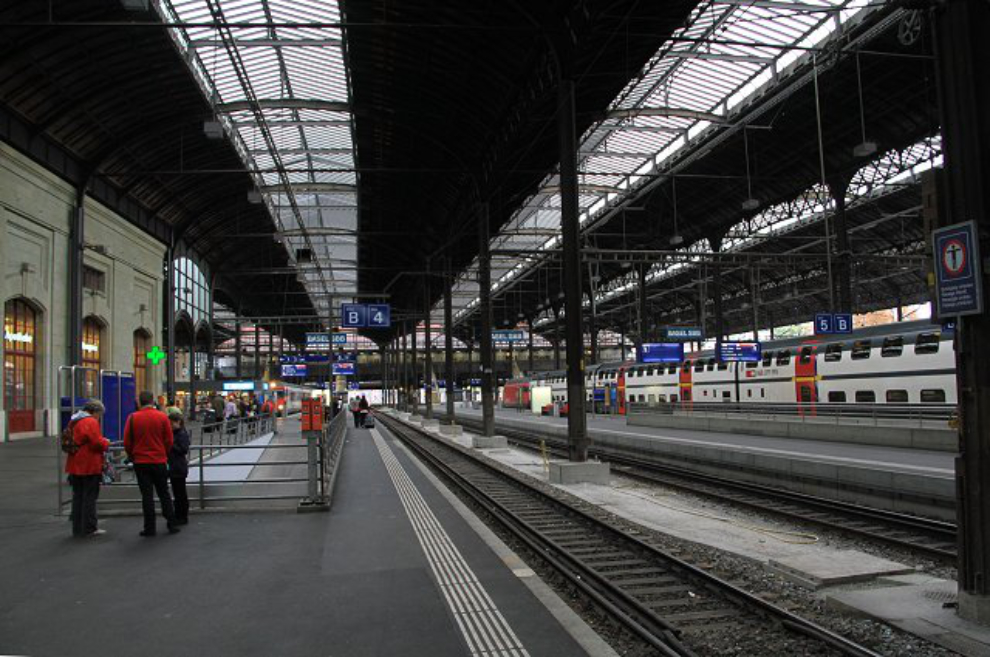
I got a few shots before our train arrived. Boarding was simple, and we left the station right at the scheduled 11:04 am.

It’s a very fast, very comfortable ride to Lucerne – it took 1 hour and 1 minute in this train, which I would guess hit speeds of 120 kmh or so.
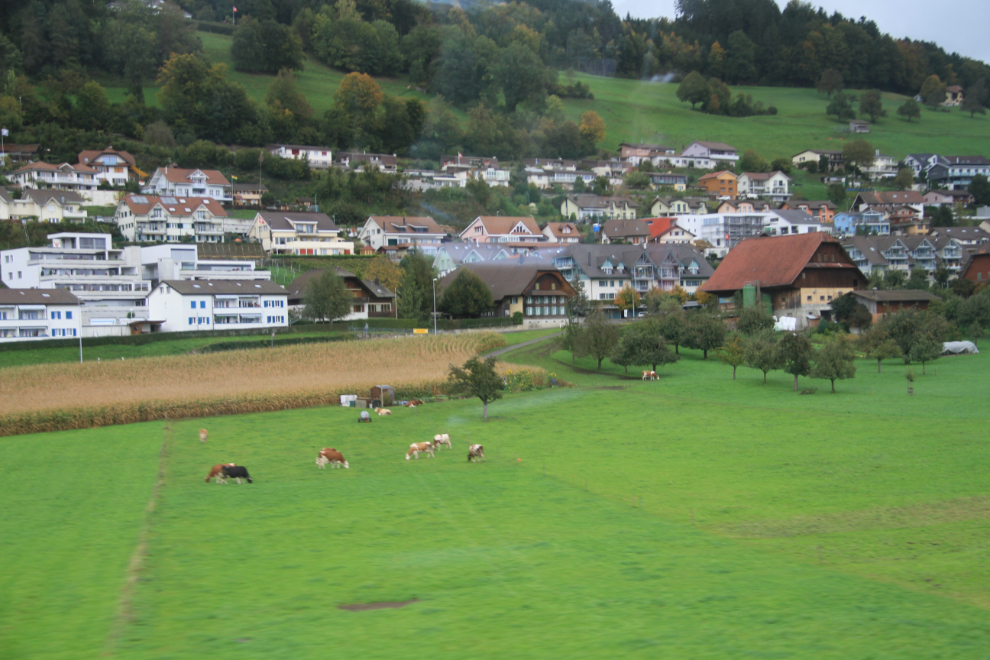
This was our train, a Bombardier ICN Tilting Train, which can hit 200 kmh.
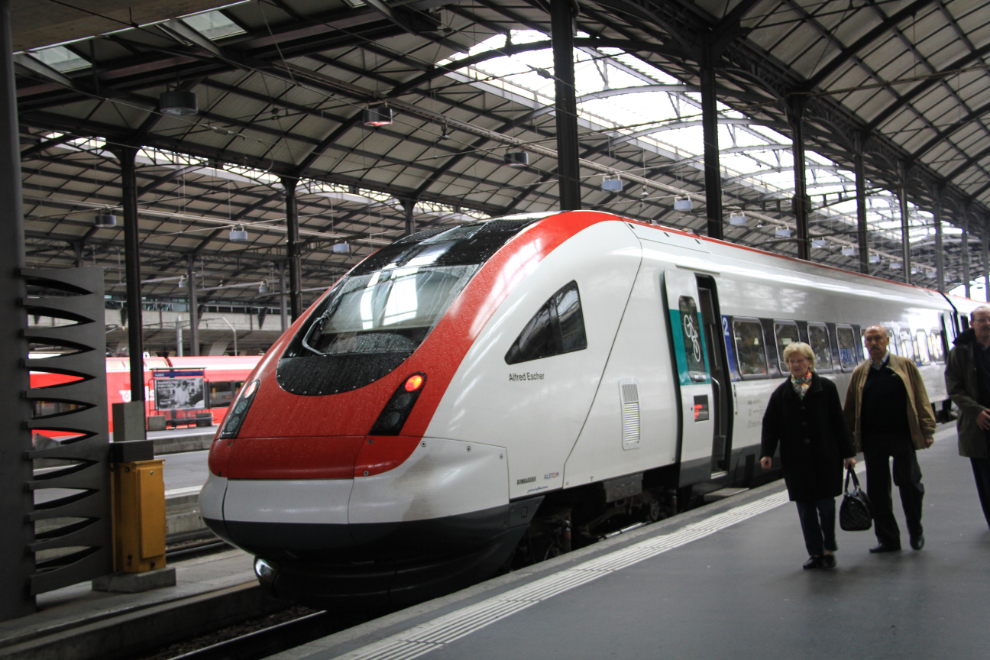
The weather in Lucerne was dreadful, with heavy rain and very low clouds – not a good day for a trip into the mountains. Not discouraged, we got a city guide and went for a walk, after buying an umbrella.
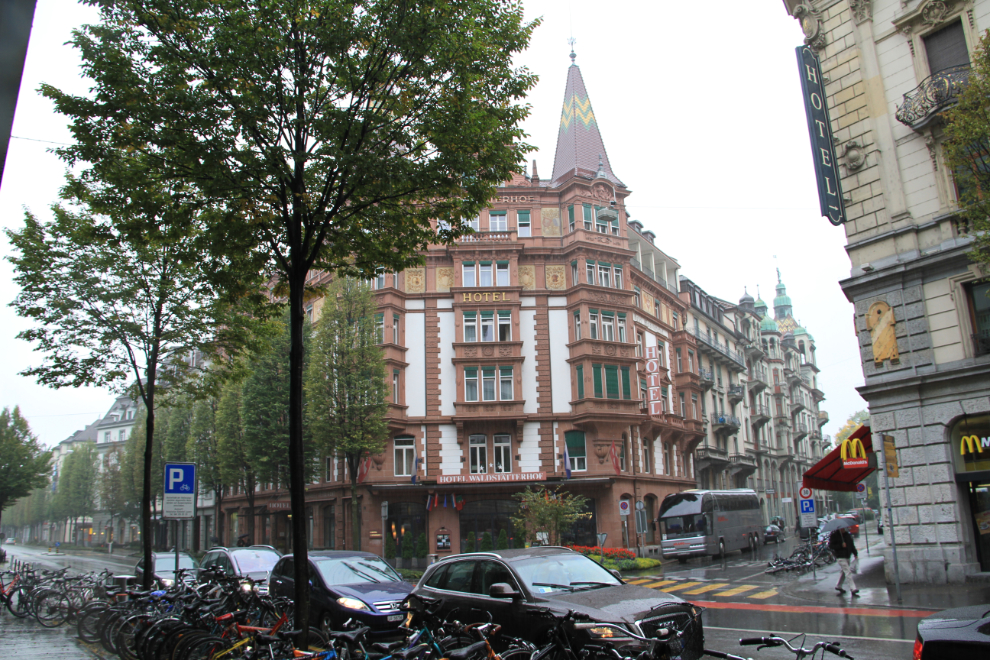
The rain stopped briefly as we got to Europaplatz, on the waterfront. Many tour boats were running, though none had many people on board, not surprising on a day like this.

A little carnival was set up at Europaplatz, brightening the day a bit.
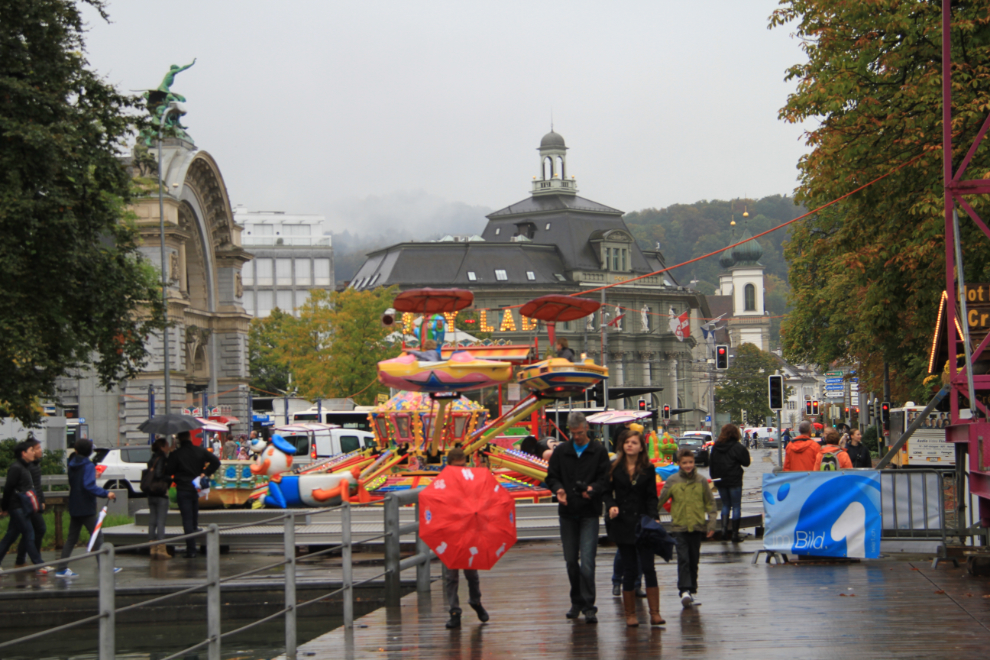
Our next stop was the Chapel Bridge (Kapellbrucke), built in the first half of the 14th Century as part of the city’s fortifications. It is the oldest wooden covered bridge in Europe, as well as the world’s oldest surviving truss bridge. The 111-foot-high stone water tower (Wasserturm), one of Lucerne’s iconic structures, has been used as a prison, torture chamber, treasury and archives over the centuries.
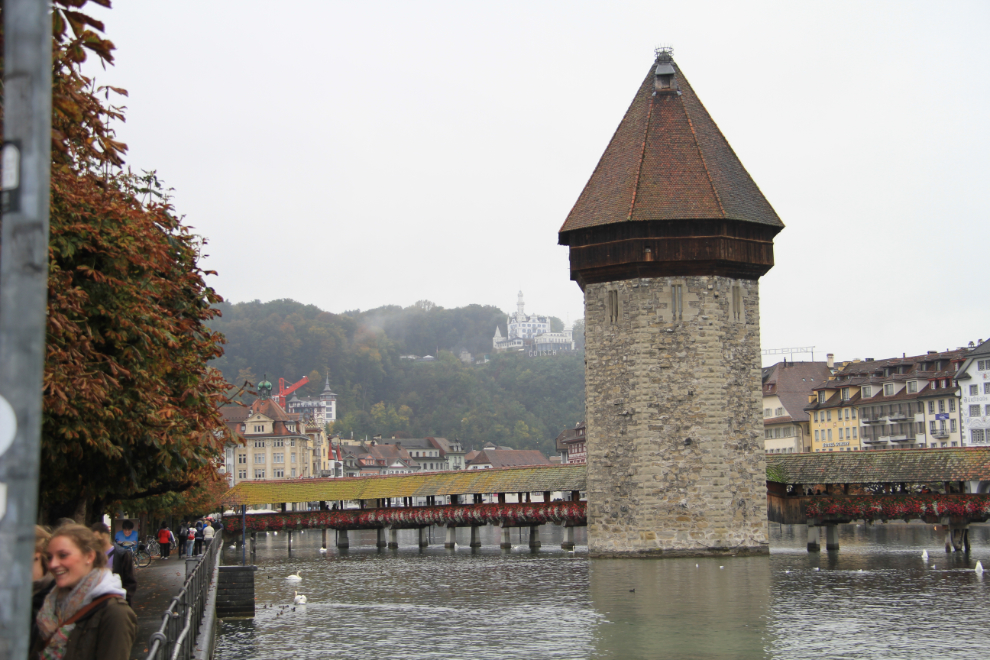
The bridge was heavily damaged in a 1993 fire, and a tiny sign near the center of the span hints that it was arson.
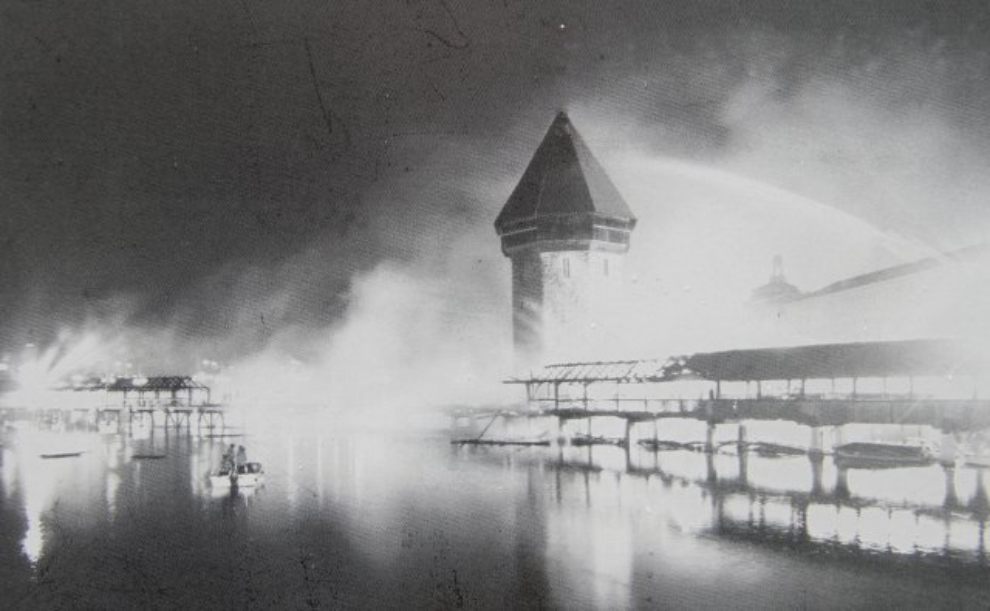
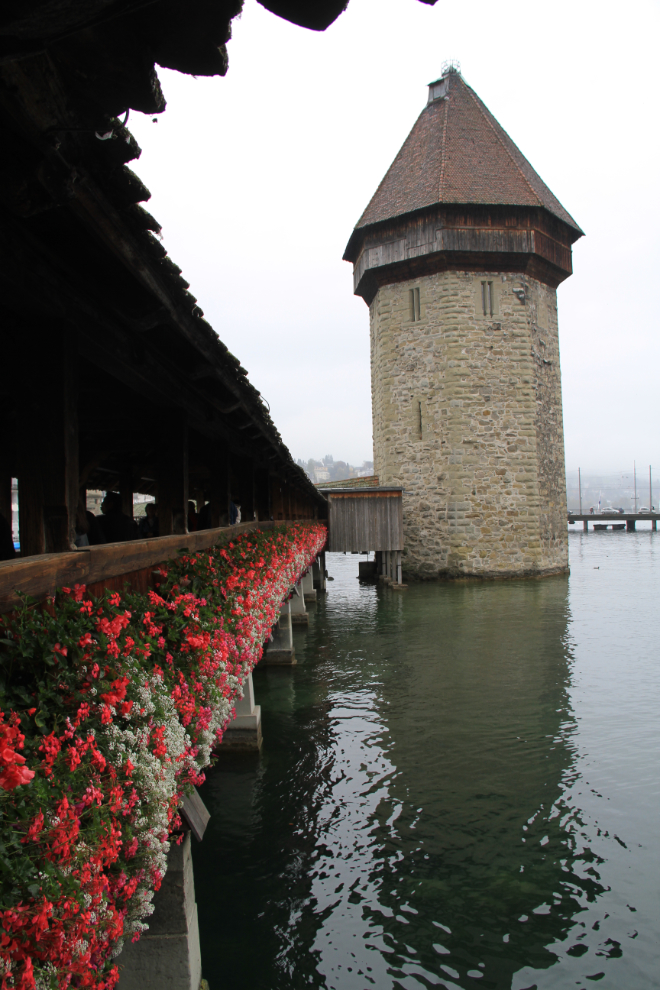
In the 17th Century, 11 paintings were added to the bridge, and another 70 were added over the years. The 1993 fire destroyed all 81 of them, but replicas are gradually being added. The paintings illustrate scenes of Swiss history, including the lives of Lucerne’s patron saints, Leodegar and Mauritius.
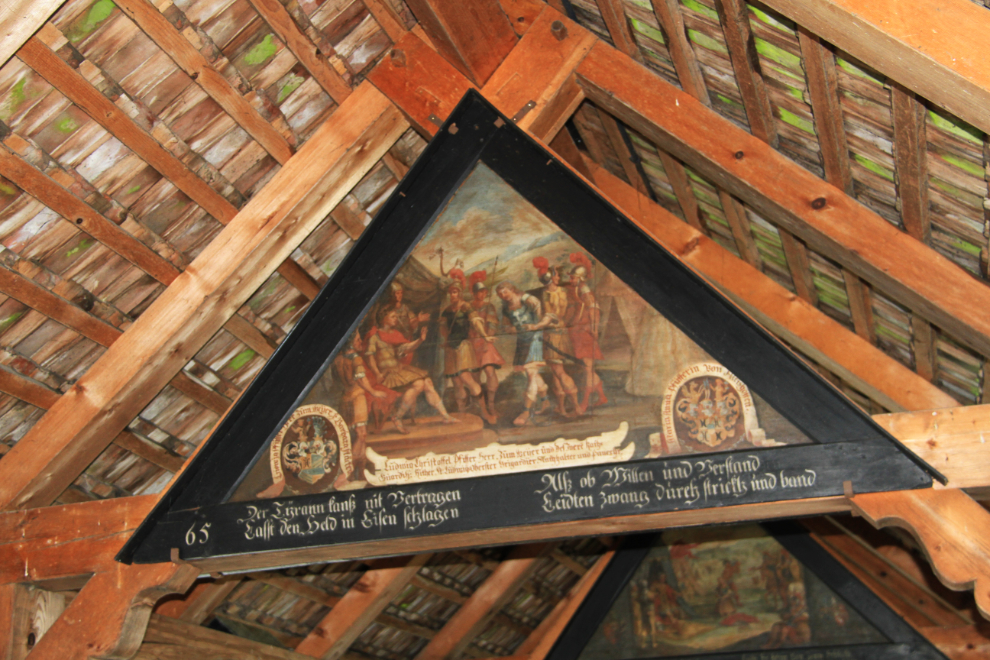
The view from the steps of the Hofkirke.
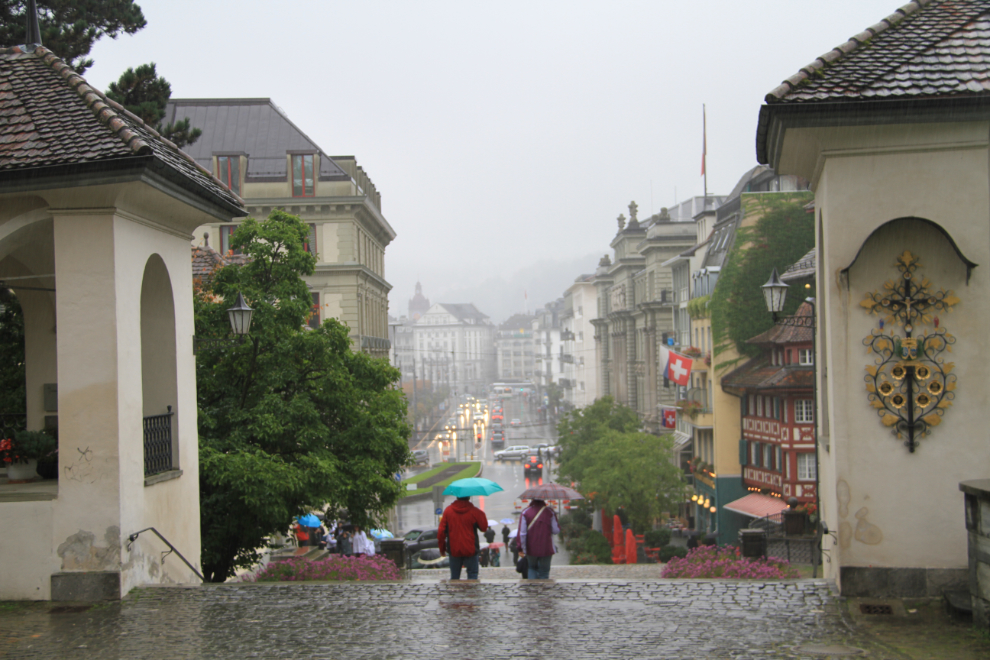
The Hofkirke, the most important Renaissance church in Switzerland, was built in 1645 to replace an 8th Century Benedictine manastery that had burned in 1633.

The quality of the altars in the Hofkirke is incredible.
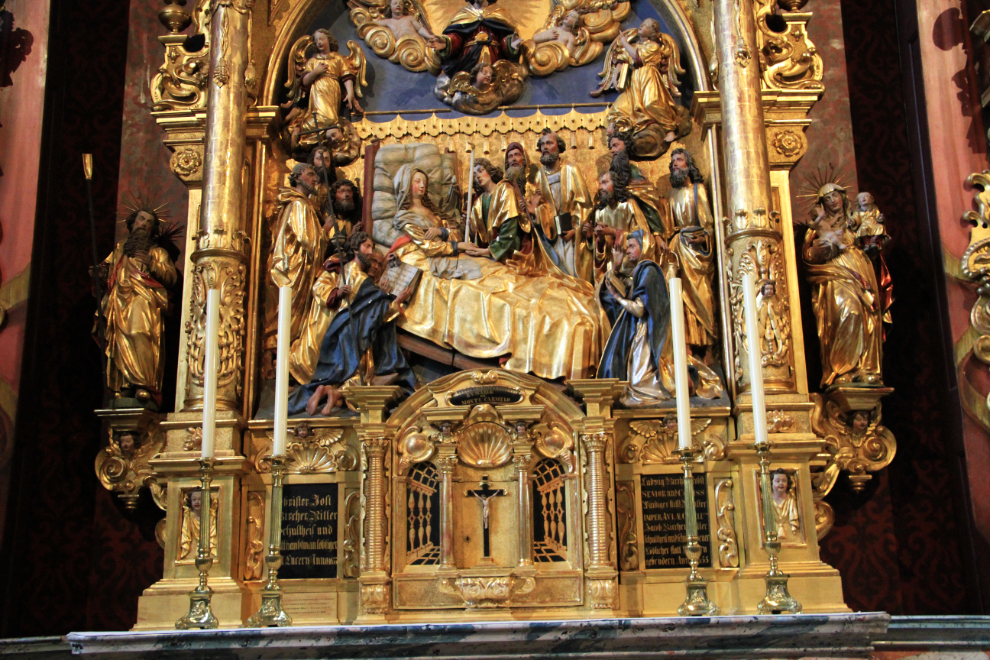
A side door at the Hofkirke.
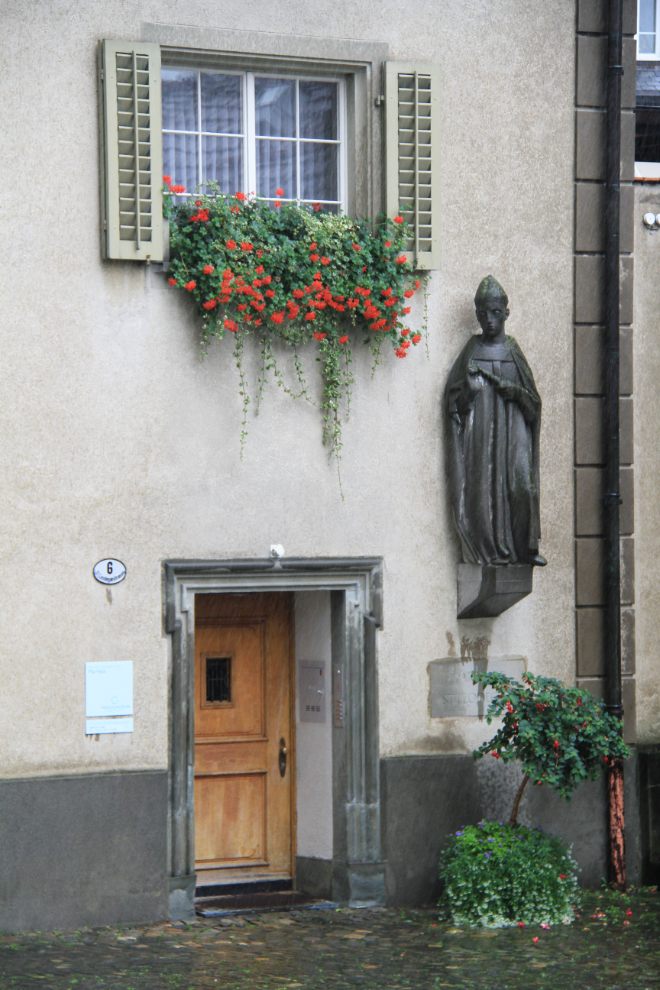
This is the sort of photo I’d seen of the Lion of Lucerne (Lowendenkmal). It didn’t prepare me for the sight of it.
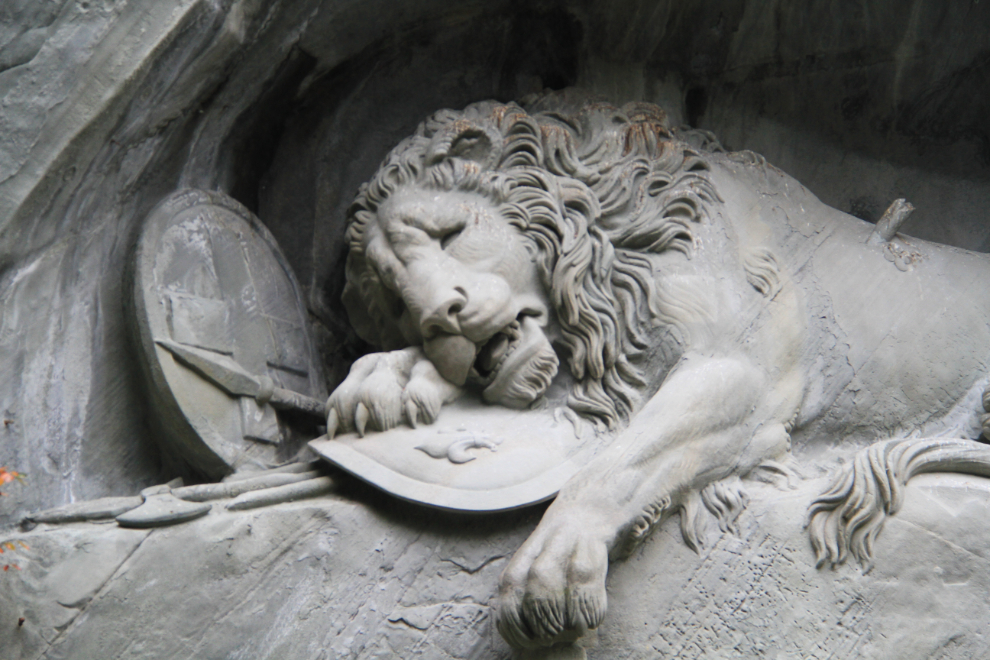
It is both a massive and powerful piece, carved out of the cliff to commemorate the deaths of Swiss mercenaries at Tuileries in 1792. Mark Twain called this “the saddest and most moving piece of rock in the world”.
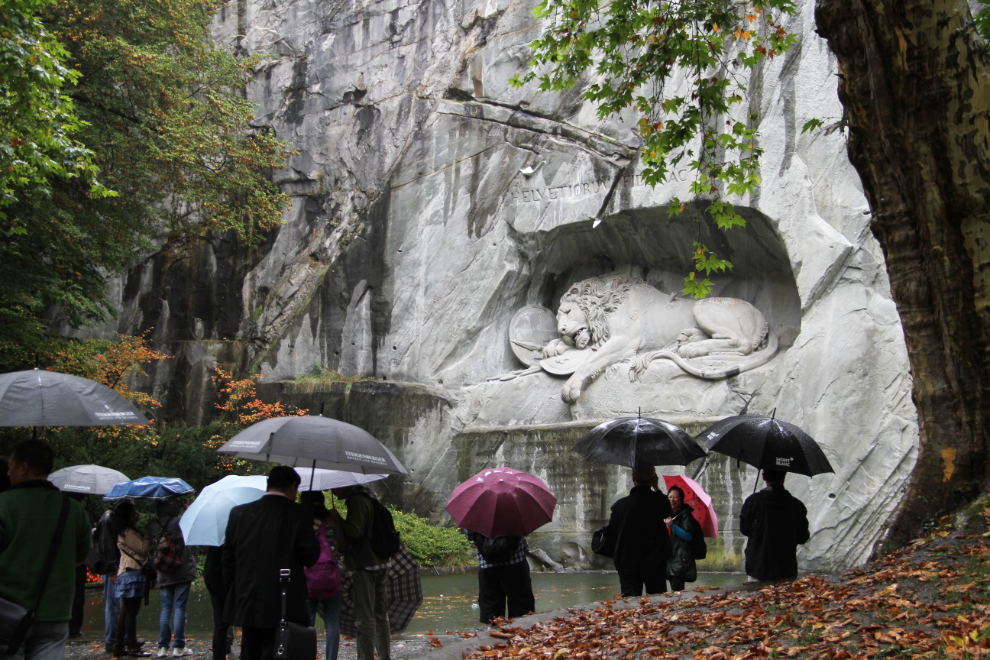
Walled cities fascinate me – it’s hard to imagine being constantly under threat of attack to this degree. This part of the Musegg Wall fortification was built in 1386.
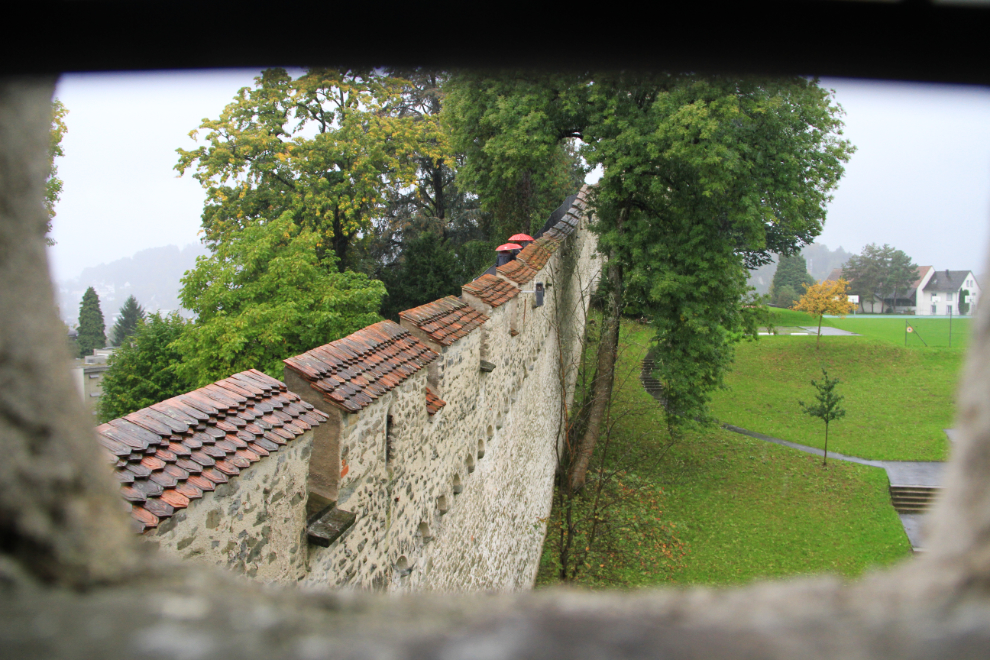
Soaked to the skin despite our protective gear, we stopped for a beer, and my little travelling buddy Nanook got out for a look around.
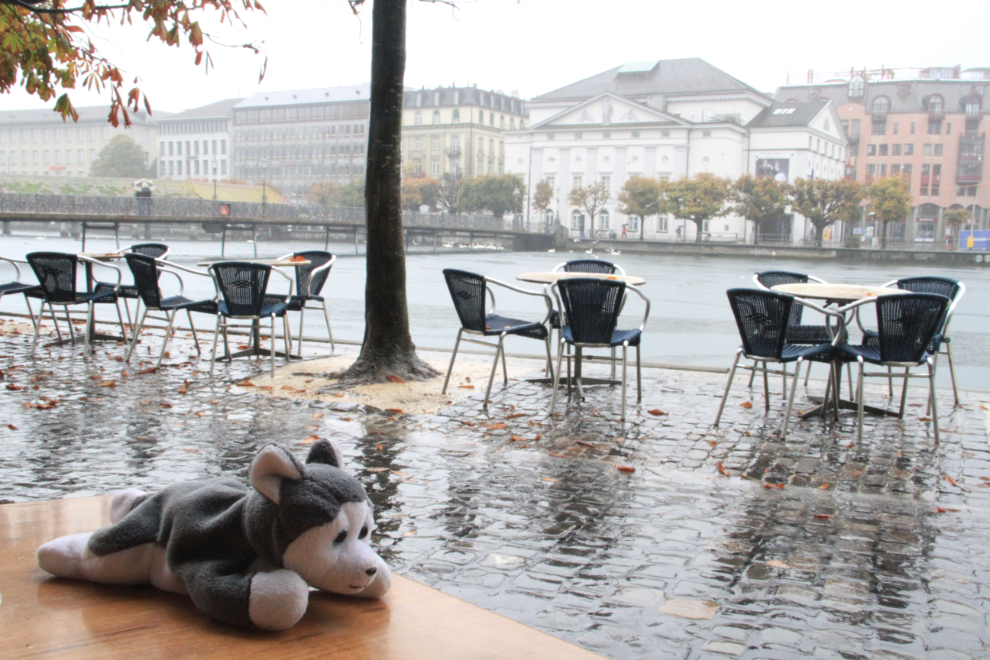
Another view from our table.
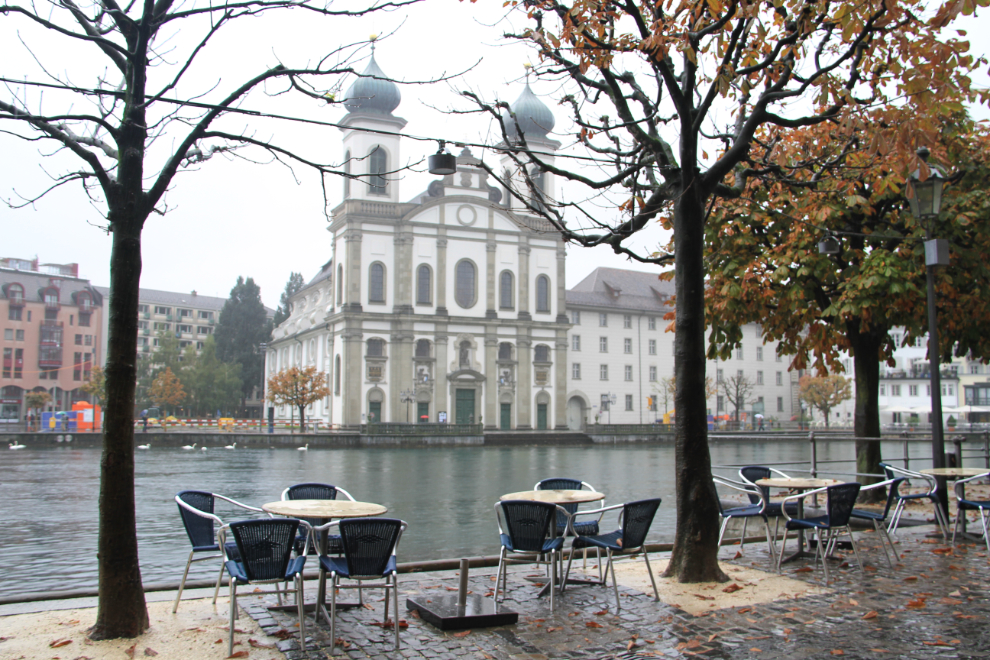
Who is enjoying this more, the swans or the people?
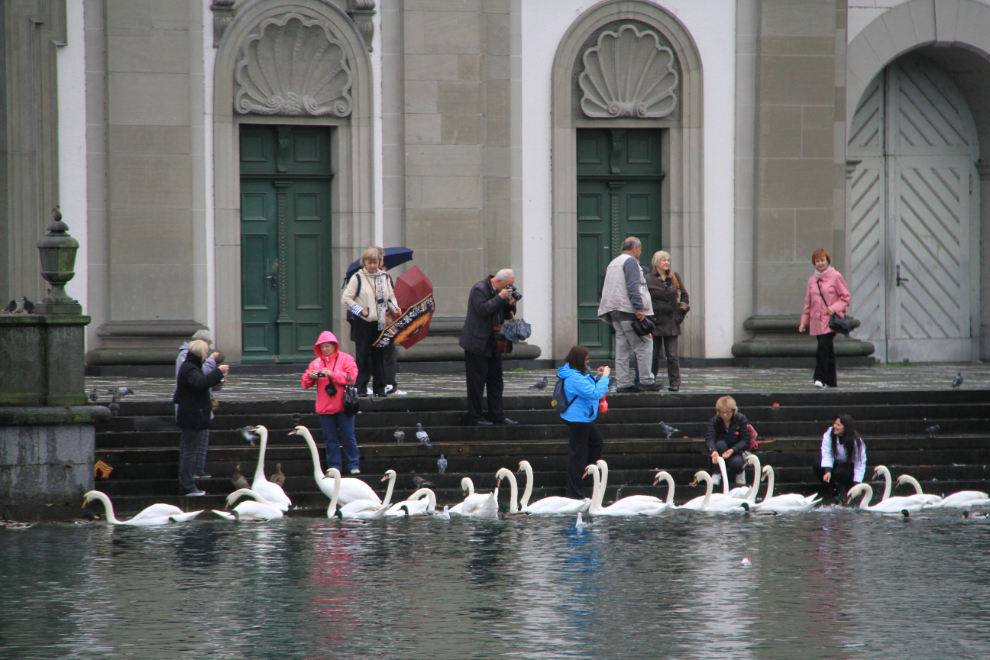
The ancient and the modern working in harmony.
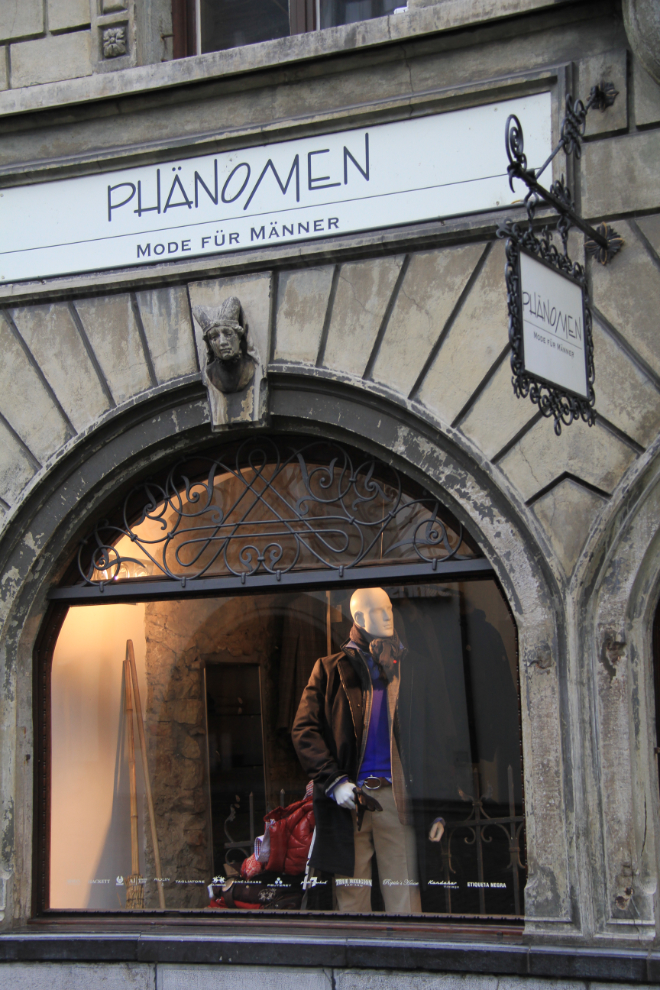
The view up the Kramgasse.
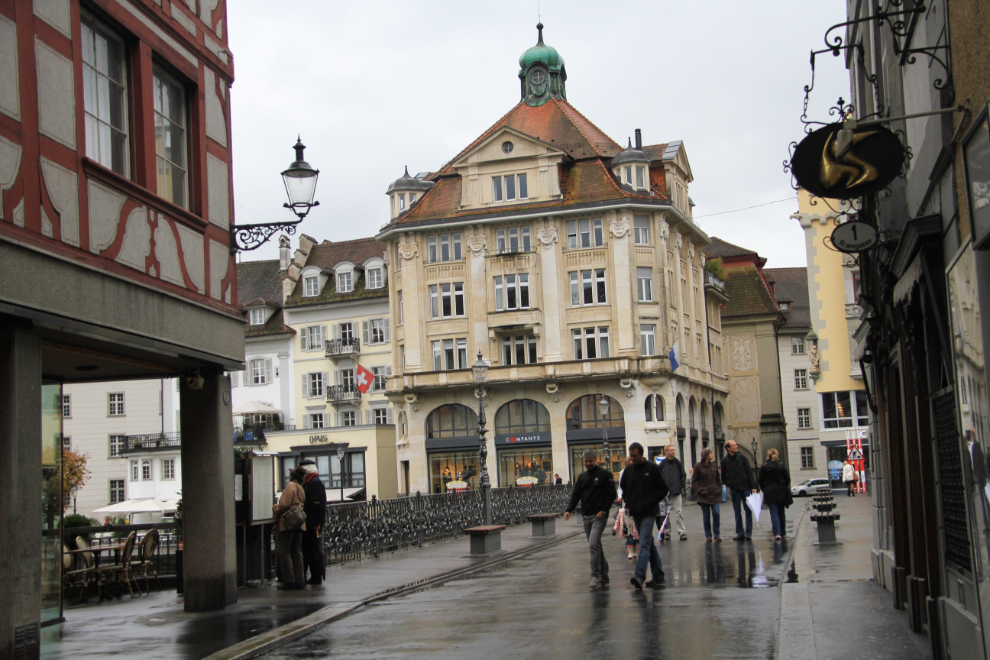
This little structure at the back of a building appears to be extremely old, but there’s no sign to give any information.
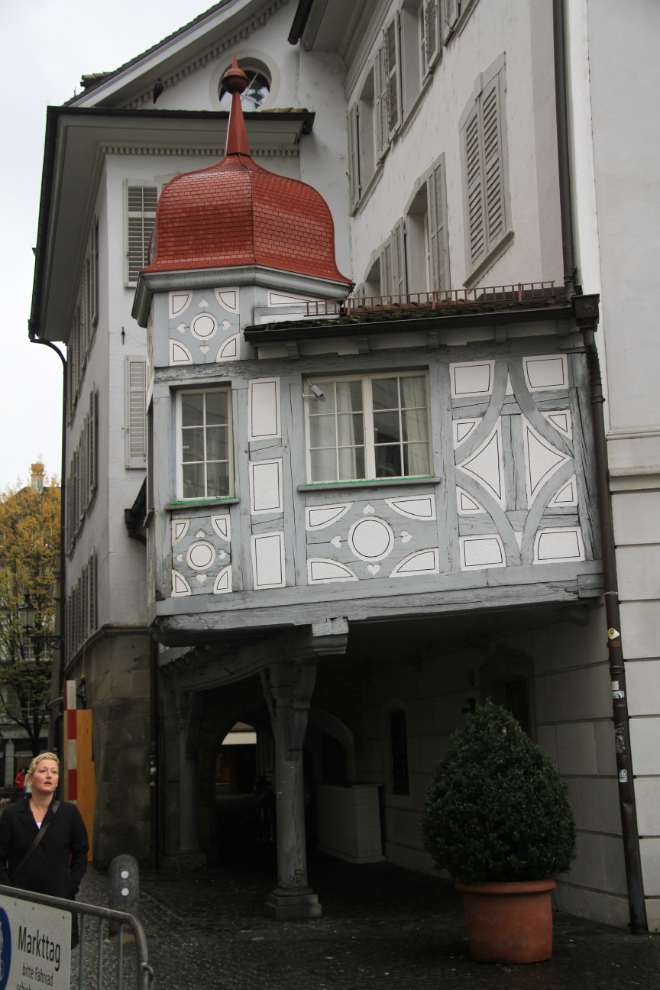
The Jesuit Church, built in 1666 by Father Christoph Vogler, was the first large-scale Baroque sacral building in Switzerland.
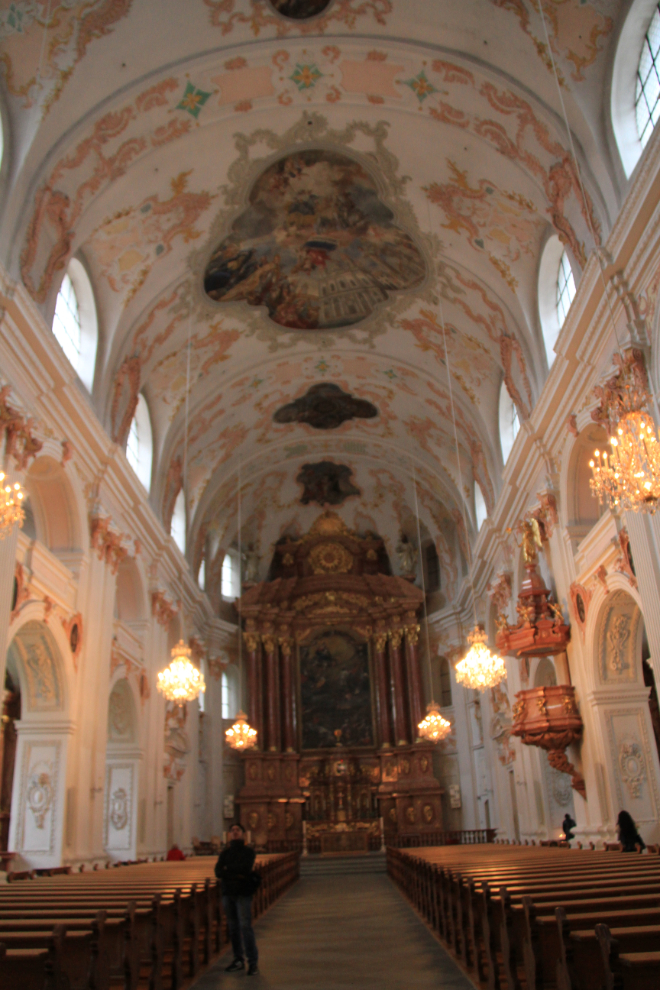
We were getitng a chill by about 4:30, and decided to call it a day. Back at the railway station, there were many temptaions in this little deli, but all we walked out with was a couple of lattes, at about what we’d pay at home, CHF 4.20
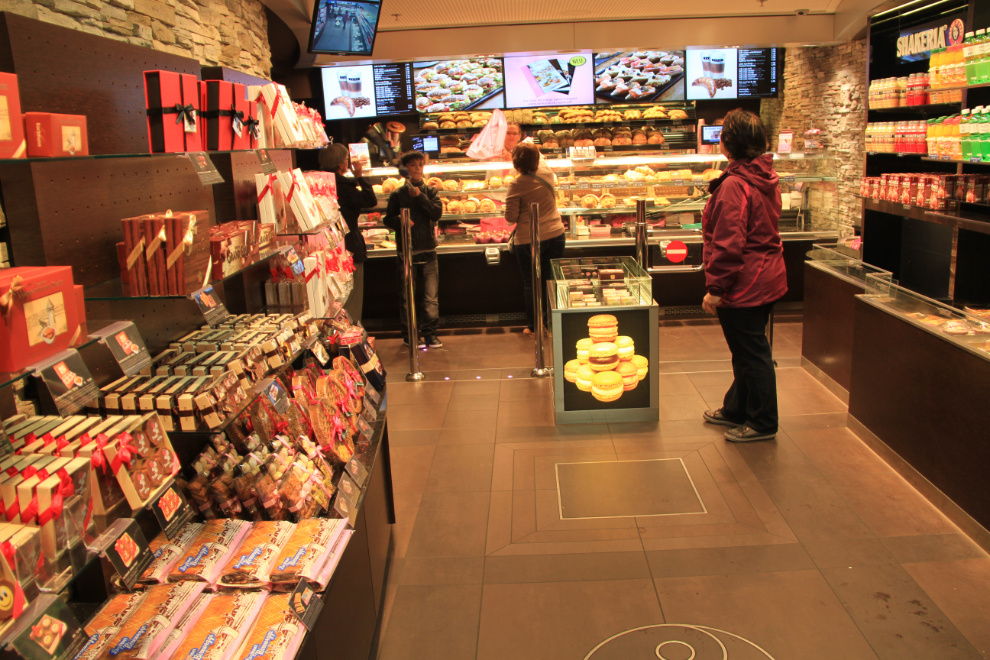
The train we caught for the trip back to Basel was much older than the previous one, but still very comfortable.
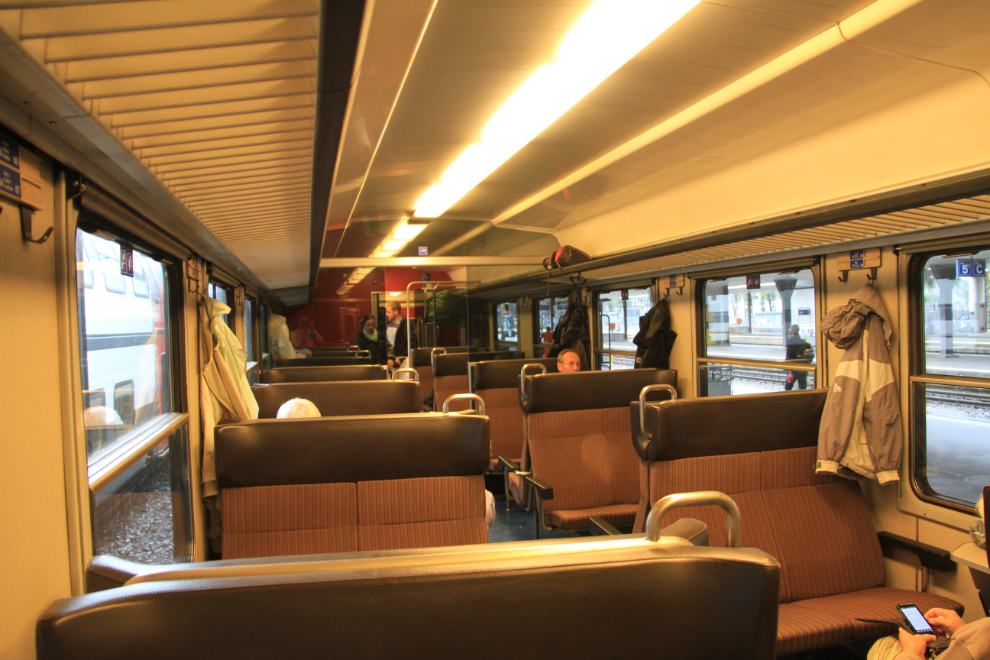
Passing the rail yard at Olten.
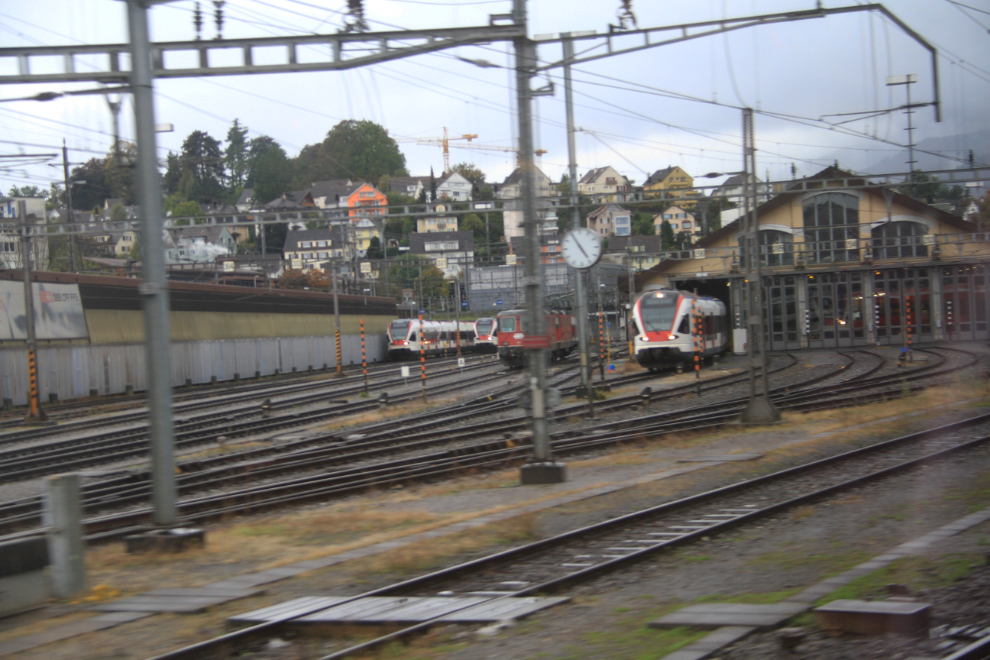
It’s lovely, peaceful country.

This had been Cathy’s birthday, so we went out for a special dinner at the hotel. Although the restaurant is badly lacking in character, the food (lamb for Cathy, perch for me) was extremely good, at a total cost of CHF 111. Unsure of the etiquette of tipping in Switzerland, I’d asked at the hotel desk when we got back from Lucerne, and Jennifer explained that it’s very much optional, but tips of up to 10% in cash are welcome. When paying by credit card, there’s no option to add a tip.
After dinner, we went out for a fairly long walk, passing by the Rhine River again (of course).

Although not the day we’d planned, it was excellent, and we both hope to get back to Lucerne for another muti-day look some day.